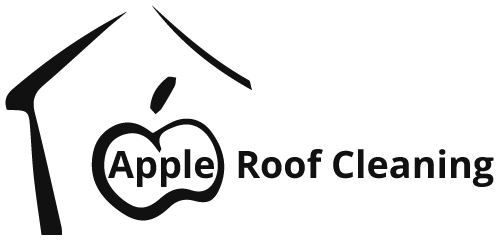Black Streaks on Roof
Black Streaks on Roof
Black Roof Streaks
Black Roof Streaks
Roofs are more than just a protective barrier over our heads. They're a testament to the health and longevity of our homes. But what happens when unsightly black streaks start to appear? Not only do they mar the beauty of our homes, but they can also indicate deeper issues. In this article, we'll explore the reasons behind these black streaks, their implications, and how to effectively deal with them.
What are they?
Black streaks on roofs are often mistaken for dirt, mold, or mildew. In reality, these streaks are primarily caused by a hardy type of blue-green algae called Gloeocapsa Magma. This algae thrives in humid environments and feeds on the limestone filler in asphalt shingles.
Common Misconceptions
Many homeowners believe that these streaks are merely cosmetic issues. However, if left untreated, they can lead to more severe problems. Another myth is that only old roofs are susceptible. The truth? Even newer roofs can fall victim if the conditions are right.

The Science Behind the Streaks
The Science Behind the Streaks
Role of algae
When Gloeocapsa Magma lands on your roof, it finds a feast in the limestone, leading to its rapid growth. As the algae consume the limestone, they produce a dark residue, which results in the black streaks we see.
Environmental factors
Regions with high humidity or frequent rainfall are more prone to these streaks. Overhanging tree branches can also exacerbate the problem by dropping organic debris and providing shade – a perfect environment for algae growth.

Impact on Roof Health
Structural implications
Over time, the algae can cause the shingles to degrade, leading to potential leaks and structural damage. The dark streaks also absorb more heat, putting additional strain on your home's cooling system.
Lifespan reduction
A roof plagued with algae will have a significantly reduced lifespan. The constant moisture and degradation can lead to premature aging and, in severe cases, might require a complete roof replacement.
Prevention is Better than Cure
Regular maintenance
Routine roof inspections and Roof cleanings can prevent the growth of algae. Ensure that your gutters are clean and that there's no stagnant water on your roof.
Choosing the Right Roofing Materials
Some modern shingles come with algae-resistant properties. If you live in a high-risk area, consider investing in these shingles when replacing or building a new roof.
Effective Roof Cleaning Methods
Professional Cleaning
Hiring professionals can ensure a thorough cleaning without damaging your roof. They use specialized equipment and solutions to eliminate algae without causing harm.
DIY Solutions
If you're a hands-on homeowner, consider using a mix of 50% water and 50% bleach to clean the streaks. Remember always to rinse the roof thoroughly after cleaning and to protect your plants from runoff.
Cost Implications
Professional roof cleaning services vs. DIY
While hiring professionals might seem costly upfront, it can save money in the long run by preventing potential damages. DIY methods are cheaper but require more effort and may not be as effective.
Long-term Financial Benefits
A clean, streak-free roof not only adds aesthetic value to your home but can also increase its market value. Moreover, preventing algae growth can save you money on energy bills and potential roof replacements.
Environmental Concerns
Eco-friendly Roof cleaning solutions
For those environmentally conscious, there are green cleaning solutions available that effectively combat algae without harming the environment.
Impact on Surrounding Flora and Fauna
Always ensure that the cleaning runoff doesn't harm your garden or local waterways. Using eco-friendly solutions can mitigate this risk.
Future of Roofing
Technological Advancements
With advancements in technology, we can expect roofing materials that are more resistant to algae and other external threats in the future.
Sustainable Roofing Options
The push for sustainability has led to the development of green roofs and other eco-friendly roofing options. These not only combat algae but also provide additional benefits like insulation and habitat for wildlife.
FAQs
What causes black streaks on roofs?
Black streaks are primarily caused by the blue-green algae, Gloeocapsa Magma, which feeds on the limestone in asphalt shingles.
Are these streaks harmful to my roof?
Yes, if left untreated, these streaks can lead to structural damage, increased energy bills, and a reduced roof lifespan.
Can I clean the streaks myself?
While DIY methods are available, it's recommended to hire professionals for a thorough and safe cleaning.
How can I prevent these streaks?
Regular roof maintenance, clean gutters, and investing in algae-resistant shingles can help prevent these streaks.
Are there eco-friendly cleaning options available?
Yes, there are green cleaning solutions that effectively combat algae without harming the environment.
How often should I clean my roof?
It's advisable to inspect and clean your roof annually, especially if you live in a humid or rainy region.
Apple Roof Cleaning Tampa
Black streaks on roofs are more than just an eyesore. They indicate the presence of algae that can compromise the structural integrity of your home. By understanding the causes and implications of these streaks, homeowners can take proactive measures to maintain the health and beauty of their roofs. Whether you opt for professional cleaning or eco-friendly solutions, the key is regular maintenance and vigilance.
